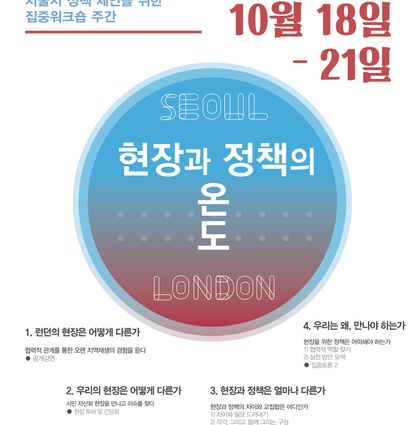
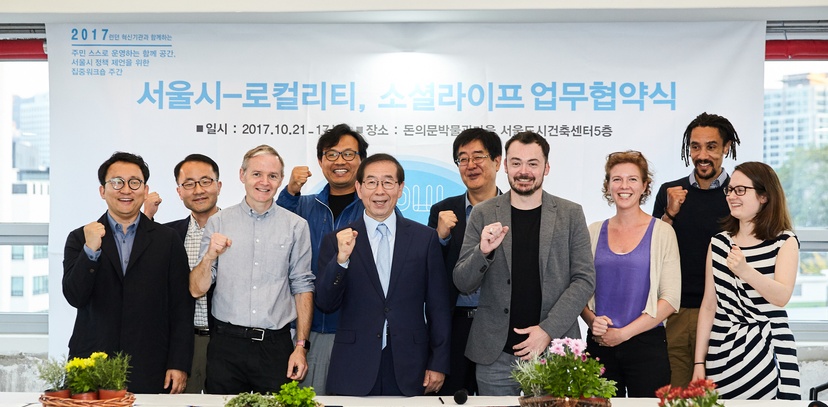
In October, Social Life was invited by Seoul Metropolitan Government to share our experience of supporting communities to have a greater role in shaping their neighbourhoods, and, hopefully, to kick off new collaborations between ourselves in London and agencies in Seoul. We were joined on the visit by Locality, who were invited to present their experienc of community asset transfer. We have been strengthening our relationship with the city as well as other organisations in Seoul for several years.
Seoul has a population of 10 million. It is considered the World’s most “wired city”, globally it has increasing cultural significance - K-pop is an international phenomenon, new landmark buildings like Zaha Hadid’s Dongdaemun Design Plaza provide a modern counterpoint to UNESCO World Heritage. However, it is also a city facing challenges – like London it is experiencing stark and growing wealth inequality. Air quality is poor, the population is ageing, it has a growing mental health problem and high suicide rate, particularly affecting young people.
In 2011 a radical Mayor Woon-son Park was elected, and since then the City Government has been encouraging new social infrastructure and more direct forms of democracy. The byword for this work in Seoul is “revitalisation” rather than “reconstruction”, building work has largely been replaced with place-making. The sharing economy and social innovation is flourishing.
The four day event we attended aimed at building foundations for a longer-term collaboration between Social Life and Seoul Metropolitan Government.
On the opening day we shared our work, our approach and the context we are working in. We highlighted our shared challenges of rising inequality, and described how some of London’s growth can feel alien to many Londoners. We also heard from Seoul Metropolitan Government representatives and intermediaries about their work and the challenges they face.
This session took place inside the Seoul Innovation Park, on the site of a renovated hospital in the Eunpyeong district on the north-west outskirts of the city. It offers space to new social and creative ventures, plus housing units for live/work entrepreneurs, a recycling centre, an art gallery and cafe. The Park is expanding, a large adjacent site is being developed.
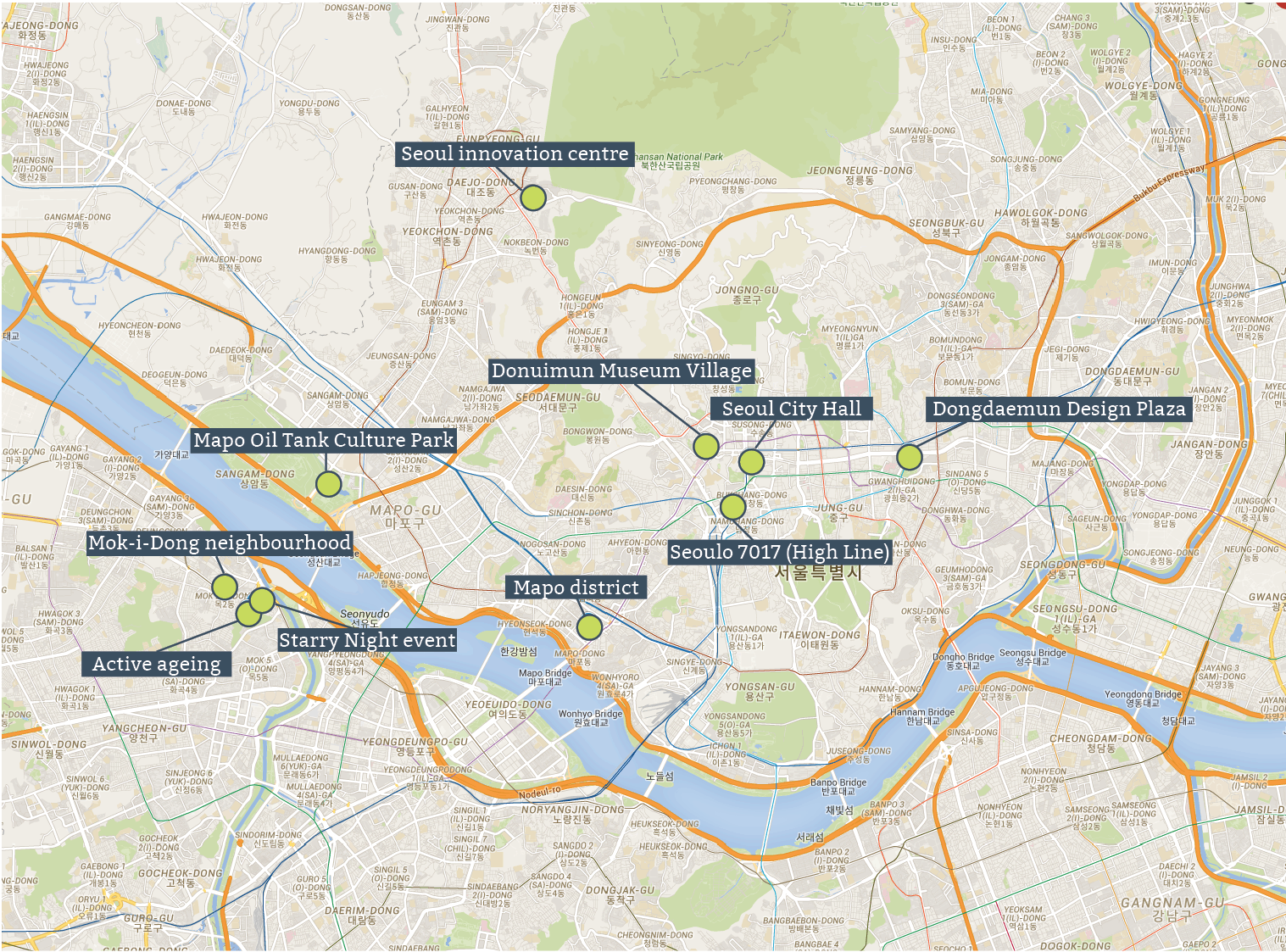
Sites visited by Social Life team
During the evening of the first day we went to Seoullo 7017. This is the Seoul version of New York City’s high line, a 1970s elevated section of highway converted (by Dutch practice MVRDV) into a “Skygarden” - pedestrianised walkway and garden, almost a kilometre long, landscaped with Korean plants and illuminated at night. Seoullo 7017 (Seoullo translates as ‘towards Seoul’ and 7017 references the years of the original construction) links the Namdaemun market (popular with tourists) with a neighbourhood on the western side of the railroad tracks close to Seoul Station. The city government are hoping the Skygarden will become a catalyst for a greener quarter for Seoul addressing one of the city’s key challenges, the lack of green space.
From visiting the walkway, we got the sense that it was already being regularly used by residents and that it offered a calm way through the city. However, much like the high line, there was a feeling from a few people on our tour that the project may be having less visible, and potentially damaging social impacts on the neighbourhoods below, namely that the rapid investment was leading to a process of gentrification.
On our second day in Seoul, we visited two neighbourhoods in the city, Mapo and Mok 2 Dong, and heard from residents and small organisations who are working to improve their neighbourhoods. We visited Mapo – a neighbourhood on the western side of the city, running north of the Han River, and a disused former oil storage facility, with six large oil tanks, converted into a new Culture Park used to promote eco enterprises and culture. This conversion was catalysed by local residents’ illicit squatting on the site for live-work use. This was at first met by City Government resistance. However, a change in the City’s approach brought a more open-minded policy and a keenness to embed these existing uses into the design of the wider Park. Residents had set up a number of social and creative enterprises in shipping containers on the site, providing a range of goods and services including affordable health, a flea market, a culture and arts festivals and eco-education. These residents told us that their main challenge was finding a way to sustain their ventures and retain an indefinite place on the Park.
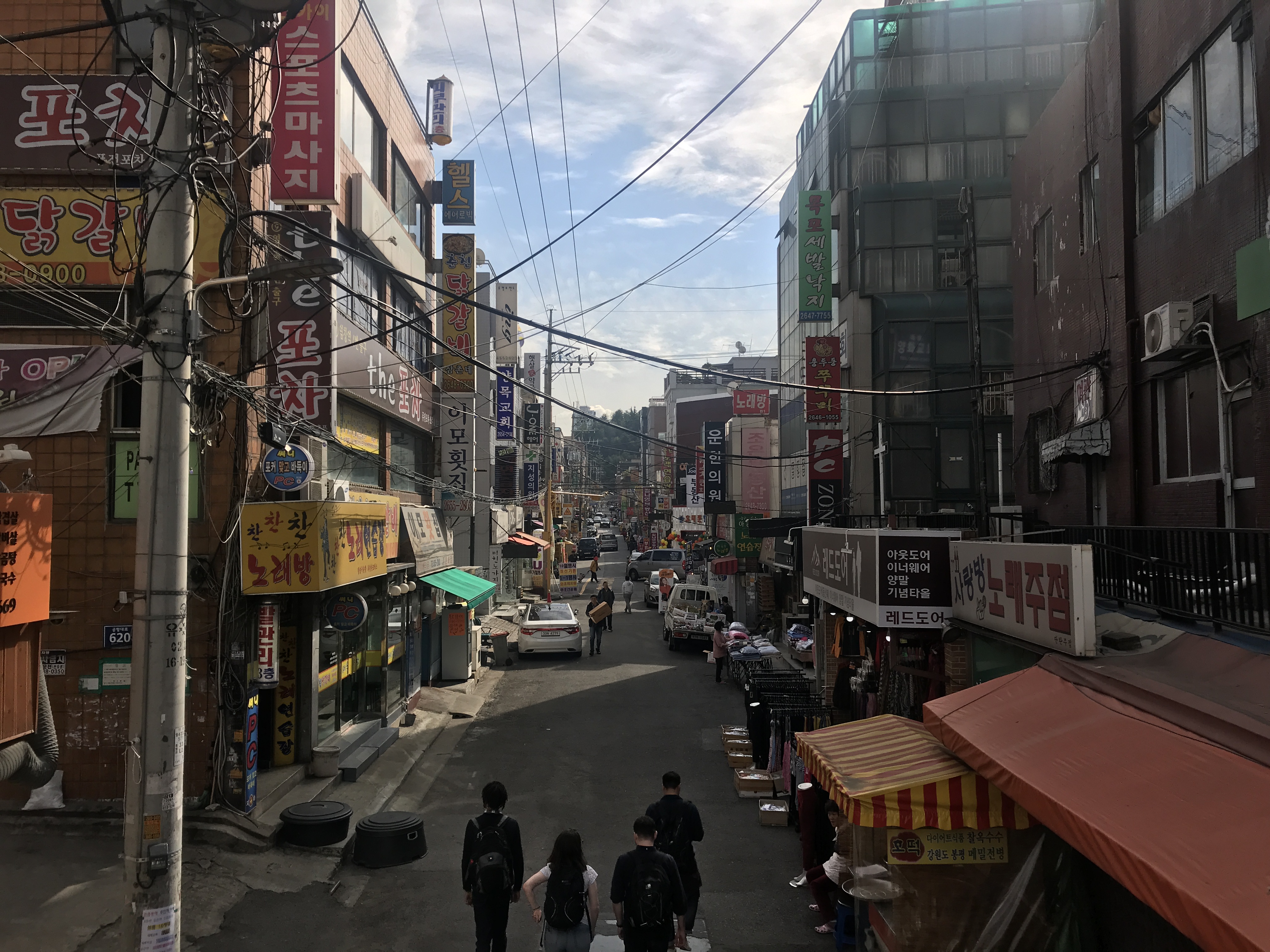
Mok 2 Dong neighbourhood [image above]
Later than afternoon, we visited Mok 2 Dong, a ward (or “village”) in the Yangcheon District, again on the western side of the city but south of the Han River. It is an area of high-rise housing, including Hyperion Tower (one of the world’s tallest residential buildings), but we visited a lower rise section with street-level shops and cafes – a “maul” (translated as village). At a community café, we heard from “Plus-minus 1°C ”, a social venture comprised of young villagers, who have initiated several social ventures since 2011, a community cafe, village school, housing co-op, and an annual town festival. We were impressed by the speed of this work and the energy and determination of the young people in making things happen in their neighbourhood. The town festival started as a small street party in 2011 and now has 50 organisers and attracts thousands of residents each year. Plus-minus 1°C took us to a new building they had recently moved into, which they want to develop as a long-term community asset. However, they have only been given the building (a former water works facility) on a two year lease, and they stated their frustration at not being to plan its uses on a longer-term basis.
On the third day, we delivered a workshop back at Seoul Innovation Park, with participants from a range of intermediary organisations, including research organisations, think tanks, sector specialists and neighbourhood support bodies. We heard from participants about some of the issues they face when working with communities. These included difficulties in opening a dialogue with residents – both in finding people willing to speak to them and encouraging them to speak openly (there was a feeling that people were less inclined to be critical about their area or the authorities than perhaps in the UK); barriers in encouraging a more inclusive approach to community participation – attempting to reach beyond the louder and stronger voices; and the perception that intermediaries were not seen as independent organisations, which inhibited their ability to work with community organisations (often they were seen as part of government).
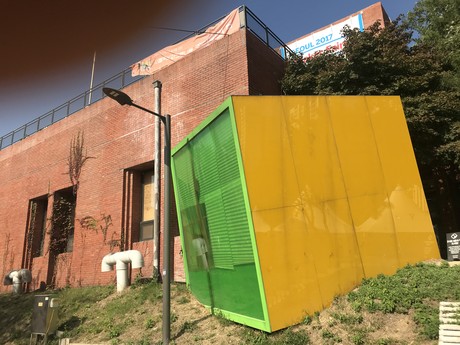
Seoul Innovation Park
Another adverse side effect of the city’s fast economic growth has ben the loss of much of the city’s heritage, and on our final day, we were given a tour of a new museum area that was being launched for the city’s first ever architecture Bienale by Young Joon Kim (a prominent Korean architect). The museum, as well as creating some open public space restaurants, art and eco-enterprises, is part of a wider attempt to restore and re-value the city’s ancient lineage.
Reconvening with our Seoul partners at a review workshop to finalise the four-day event, we reflected on our experience in Seoul and identified practical steps for taking forward our collaboration. An important programme in the city has been the conversion of 424 redundant local administrative offices into neighbourhood uses such as libraries, small theatres, concert halls and cafes. Key to this work has been the engagement and activation of residents to design and manage these new community spaces and the mechanisms to enable communities to lead work in their own neighbourhoods.
The desire is to shift the city’s balance from fast economic growth to the social economy – and in particular an interest in stimulating community organisations with assets and business models that would help sustain them – and there was keen interest from Seoul stakeholders in accessing support from Social Life to help them do this. However, we offered a note of caution about the UK experience, flagging up that community development is rarely a quick or linear process and that sometimes it is the role of government to step away from the process.
We sensed there is real scope for Seoul Metropolitan Government to use our social sustainability framework to support neighbourhoods in the city. More work is needed to tailor this framework to best suit the Seoul context. It was also clear that change takes place at a very different pace in Seoul however this means there has often been less time given for reflection on the impact of these projects. Measuring the social impact of neighbourhood change is something which Social Life has been working on in the UK and it would be interesting to also do this kind of work in Seoul. We also saw the potential to provide some further support workshops with intermediary organisations – particularly with those supporting neighbourhood groups (and also with those groups directly) to share our experience of understanding neighbourhoods and working with residents. We look forward to our next steps and our next visit!
This post was written by David Moynihan and Lucia Caistor Arendar, pictured below at the Social Innovation Park.

